
Vienna is the capital, largest city, and one of nine federal states of Austria. Vienna is Austria's most populous city and its primate city, with about two million inhabitants, and its cultural, economic, and political center. It is the fifth-largest city proper by population in the European Union and the largest of all cities on the Danube river by population.
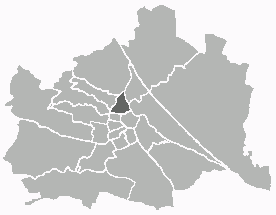
Alsergrund is the ninth district of Vienna, Austria. It is located just north of the first, central district, Innere Stadt. Alsergrund was incorporated in 1862, with seven suburbs. As a central district, the area is densely populated. According to the census of 2001, there were 37,816 inhabitants over 2.99 square km.
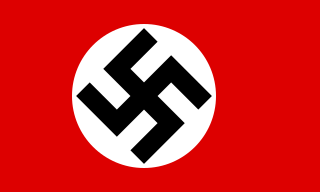
Ostmark was a name that referred historically to the Margraviate of Austria, a medieval frontier march. It was also used in Nazi propaganda from 1938 to 1942 to refer to the formerly independent Federal State of Austria after the Anschluss with Nazi Germany. From the Anschluss until 1939, the official name used was Land Österreich.

Hainburg an der Donau is a town located in the Bruck an der Leitha district in the state of Lower Austria of eastern Austria. In 2021 it had a population of about 7,000.
The districts of Vienna are the 23 named city sections of Vienna, Austria, which are numbered for easy reference. They were created from 1850 onwards, when the city area was enlarged by the inclusion of surrounding communities. Although they fill a similar role, Vienna's municipal districts are not administrative districts (Bezirke) as defined by the federal constitution; Vienna is a statutory city and as such is a single administrative district in its entirety.

The history of Vienna has been long and varied, beginning when the Roman Empire created a military camp in the area now covered by Vienna's city centre. Vienna grew from the Roman settlement known as Vindobona to be an important trading site in the 11th century. It became the capital of the Babenberg dynasty and subsequently of the Austrian Habsburgs, under whom it became one of Europe's cultural hubs. During the 19th century as the capital of the Austrian Empire and later Austria-Hungary, it temporarily became one of Europe's biggest cities. Since the end of World War I, Vienna has been the capital of the Republic of Austria.
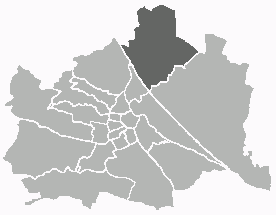
Floridsdorf is the 21st district of Vienna, located in the northern part of the city and comprising seven formerly independent communities: Floridsdorf, Donaufeld, Greater Jedlersdorf, Jedlesee, Leopoldau, Stammersdorf, and Strebersdorf.
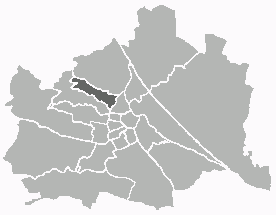
Währing is the 18th district of Vienna and lies in northwestern Vienna on the edge of the Vienna Woods. It was formed in 1892 from the unification of the older suburbs of Währing, Weinhaus, Gersthof, Pötzleinsdorf, Neustift am Walde and Salmannsdorf. In 1938 Neustift am Walde and Salmannsdorf were annexed to the neighbouring 19th District (Döbling).
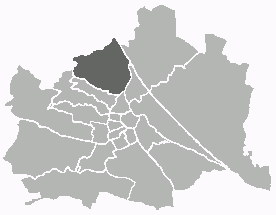
Döbling is the 19th district in the city of Vienna, Austria. It is located in the north of Vienna, north of the districts Alsergrund and Währing. Döbling has some heavily populated urban areas with many residential buildings, and borders the Vienna Woods. It includes some of the most expensive residential areas such as Grinzing, Sievering, and Neustift am Walde, and is home to many Heurigen taverns. There are some large Gemeindebauten, including Vienna's most famous, the Karl-Marx-Hof.

A district is a second-level division of the executive arm of the Austrian government. District offices are the primary point of contact between residents and the state for most acts of government that exceed municipal purview: marriage licenses, driver licenses, passports, assembly permits, hunting permits, or dealings with public health officers for example all involve interaction with the district administrative authority.

The Jewish Cemetery in Währing, opened in 1784, was the main burial site for members of the Israelitische Kultusgemeinde Wien. Besides the St. Marx Cemetery it is the last remaining cemetery of Vienna in the Biedermeier style. After its closure in the 1880s, it was partially destroyed during the time of the Third Reich, and is now only partly accessible due to its deteriorating condition. A long-running debate over the restoration of the cemetery has been taking place since 2006 between politicians of the federal and local levels as well as experts.

Groß-Enzersdorf is a town and municipality in the district of Gänserndorf in the Austrian state of Lower Austria, directly east of Vienna and north of the river Danube. Apart from the town itself, it also comprises seven subordinated municipalities.
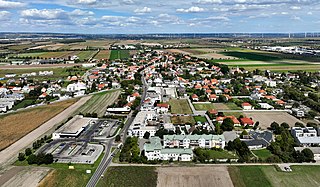
Gerasdorf bei Wien is a town in the district of Korneuburg in the Austrian state of Lower Austria. The city has 10,862 inhabitants.
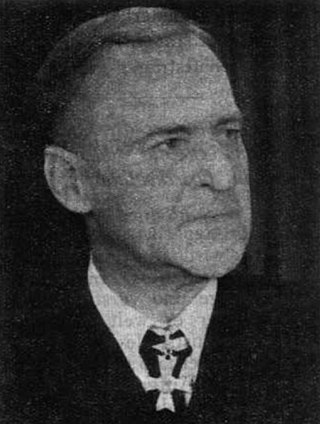
Hermann Neubacher was an Austrian Nazi politician who held a number of diplomatic posts in the Third Reich. During the Second World War, he was appointed as the leading German foreign ministry official for Greece and the Balkans.

The States of the Weimar Republic were the first-level administrative divisions and constituent states of the German Reich during the Weimar Republic era. The states were established in 1918 following the German Revolution upon the conclusion of World War I, and based on the 22 constituent states of the German Empire that abolished their local monarchies. The new states continued as republics alongside the three pre-existing republican city-states within the new Weimar Republic, adopting the titles Freistaat or Volksstaat.

A Führer city, or Führerstadt in German, was a status given to five German cities in 1937 by Adolf Hitler, the dictator of Nazi Germany. The status was based on Hitler's vision of undertaking gigantic urban transformation projects in these cities, and executed by German architects including Albert Speer, Paul Ludwig Troost, German Bestelmeyer, Konstanty Gutschow, Hermann Giesler, Leonhard Gall and Paul Otto August Baumgarten. More modest reconstruction projects were to take place in thirty-five other cities, although some sources assert this number was as high as fifty. These plans were however not realised for the greater part because of the onset of the Second World War, although construction continued to take place even in wartime circumstances at Hitler's insistence.

As Vienna, the capital of Austria is both a city and a state, the 100 members of the Municipal Council (Gemeinderat) of the city of Vienna also act as members of the Landtag of the state of Vienna. Members serve for five years.

The Wien Nordwestbahnhof, abbreviated as Wien NWBH, is a goods station in transformation to a city development area in Brigittenau district of Vienna, Austria. Passenger transport ended in 1959. It serves as the southern terminus of the Austrian Northwestern Railway. The northwestern terminus of the line was Prague Těšnov station till 1972. Freight transport is in the phase of termination. By 2025, a new district will be built on the site. An interim use phase will begin in 2018.

Anna Goldsteiner was a Viennese resistance activist. She was executed.

Jedlesee is a suburb of Floridsdorf, the 21st district of Vienna. An independent community until 1894, it was joined along with Leopoldau, Donaufeld, Floridsdorf and Neu Jedlesdorf to the greater Floridsdorf municipality, becoming part of Vienna in 1904. Jedlesee is most notable for being the site of the estate of Countess Anna Maria Erdődy, close friend and patron of Beethoven, who stayed there with her on numerous occasions between 1805 and 1818.




















